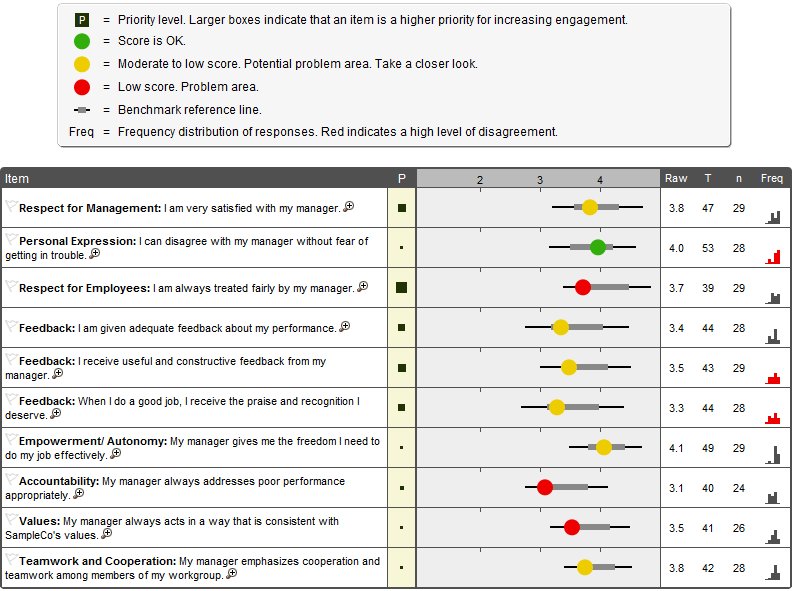Identifying Employee Engagement Priorities
If you are assessing the level of employee engagement or job satisfaction, you need to know exactly what matters most to them. This information is critical to understanding exactly what you need to fix. To simply know what employees are most and least satisfied with is not enough. For example, you might find that your employees are "very dissatisfied" with some aspect of their jobs, but that the thing they are unhappy with is not really that important to them or has little bearing on how engaged they are. Or you might find that your employees are moderately satisfied with some other aspect of their jobs, but you also learn that this is the most important thing to them and therefore an area to focus on improving.
Simply asking employees to tell you what is most important to them is one approach, but this approach has some serious drawbacks. Most significantly, it doubles the length of the survey, which means fewer employees will complete the survey and those that do will be more likely to either find the process more bothersome or experience "survey fatigue" as they near the end. Worst of all, this means you will probably get fewer written comments from your employees.
Focal ORG uses a different approach to measure "importance". The method we use starts with a statistically-based model of engagement that uses factor analysis to identify the key components of engagement that are common across most/all organizations.
Next, we use correlation to identify which items are the biggest drivers of engagement in a specific organization. It is important to note that correlation is not causation. Strictly speaking, we cannot establish a cause-effect relationship based solely on correlations. However, from a practical perspective, items that are highly correlated with engagement are usually a reliable indication of what is having a positive or negative impact on engagement.
Finally, we incorporate group size and standardized scores to identify the items that are the highest engagement priorities. Generally speaking, this means we look for items with high correlations and low scores.
The sample below shows how this all comes together in the engagement dashboard. These results pertain to the "My Manager" engagement factor.
Items near the top of the list have the highest correlations with engagement, but these are not necessarily the highest priorities. For example the second item has a low priority because the score is in this area is relatively high. For this group, the highest engagement priority, or the problem that is most in need of addressing, is the third item on the list. The next logical step would be to examine the written comments for any additional information about what might be happening here. In addition, there is a clear theme in the three "fairness" items. While the priority is a bit lower, this common theme indicates that there is a general deficiency in the area of "feedback" that should be addressed.

Popular Employee Engagement Article Topics and Resources:
- What is Employee Engagement?
- Employee Satisfaction vs. Employee Engagement
- Sample Employee Survey Questions
- Employee Engagement Dashboard Examples
